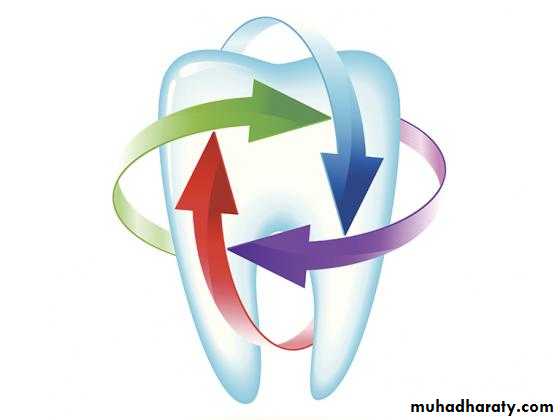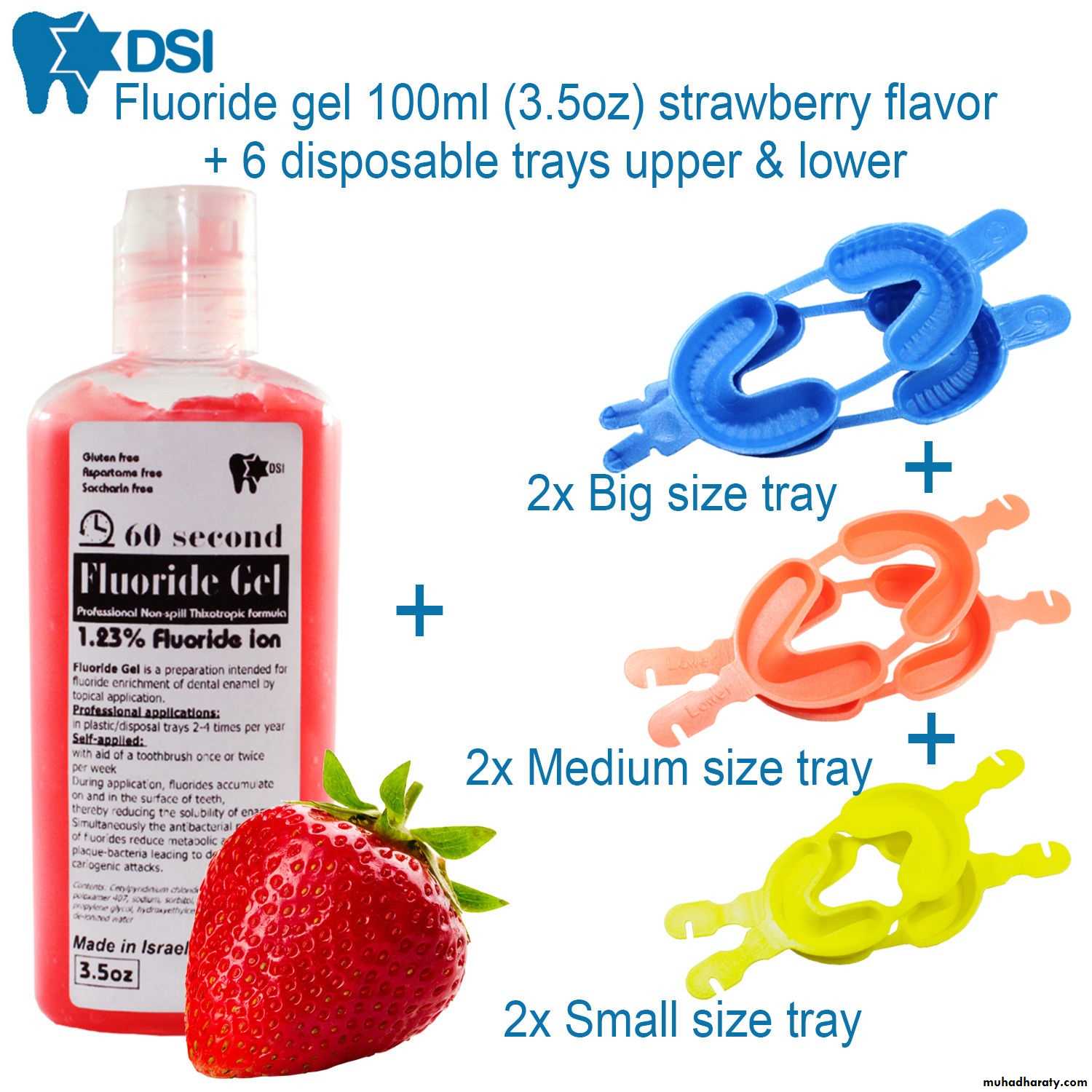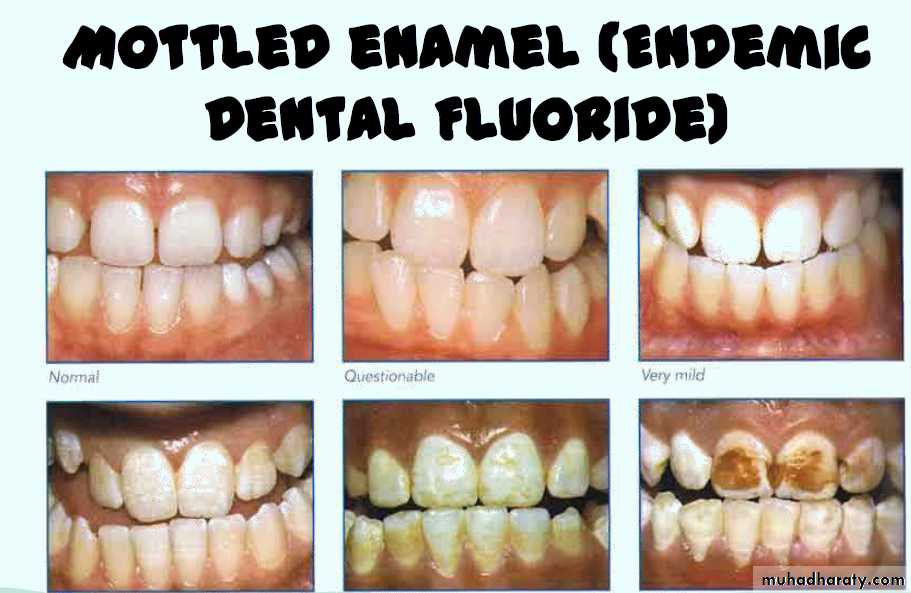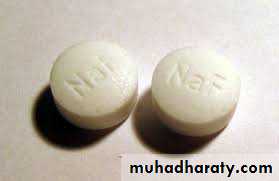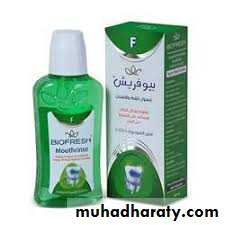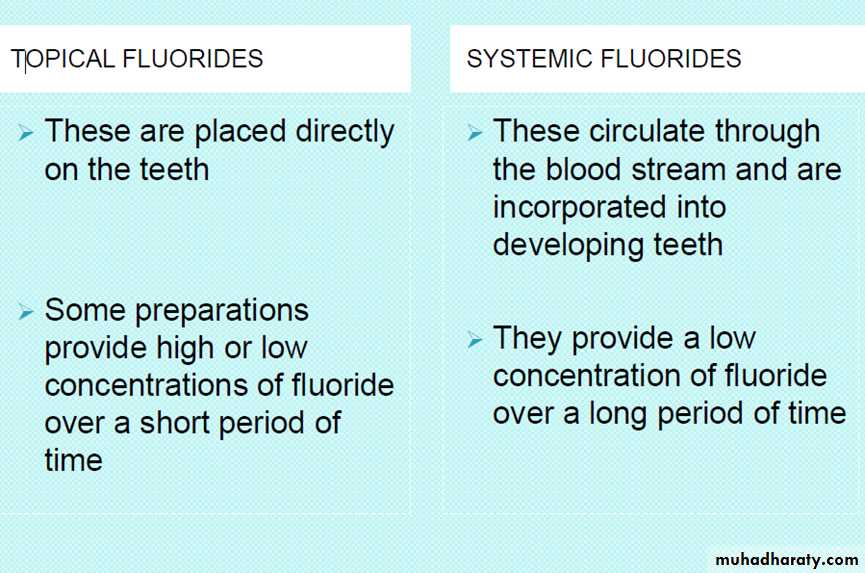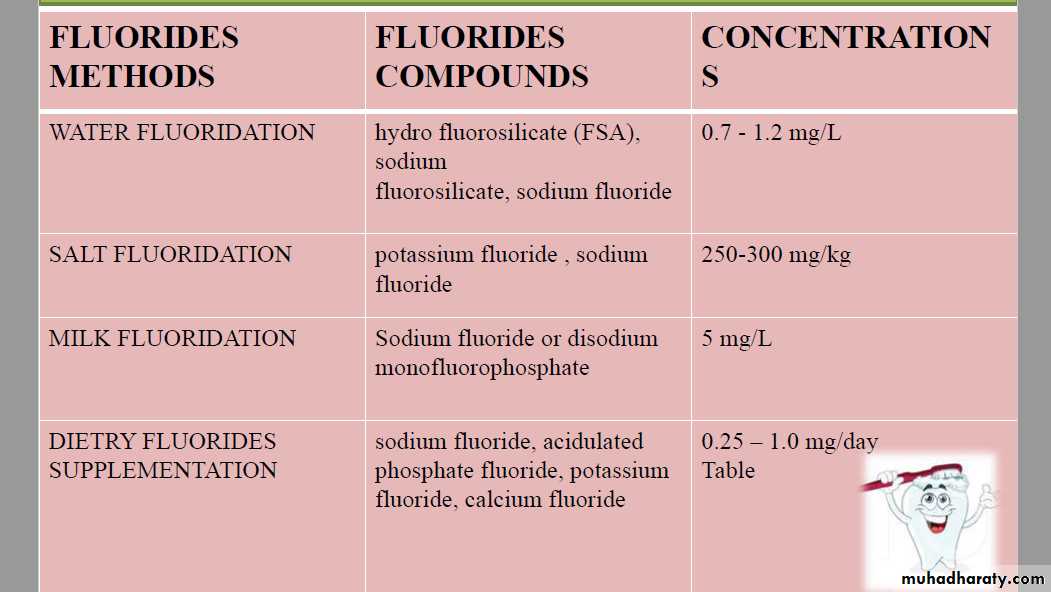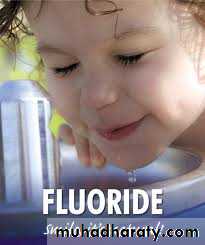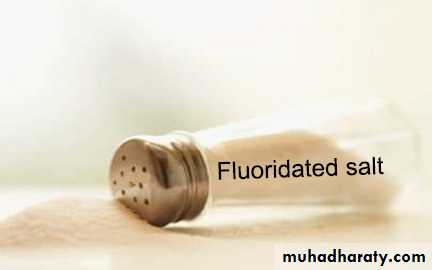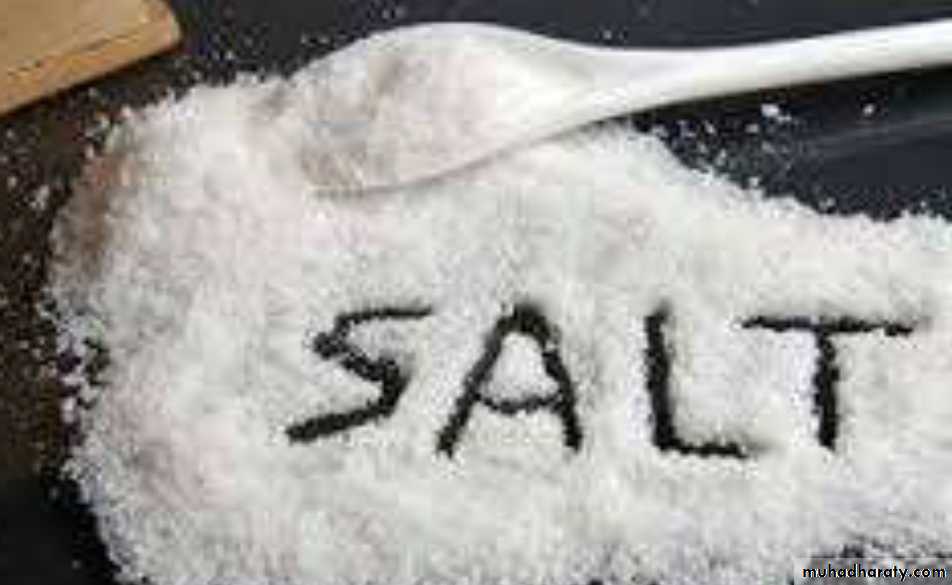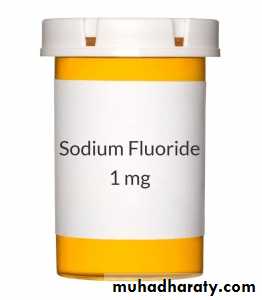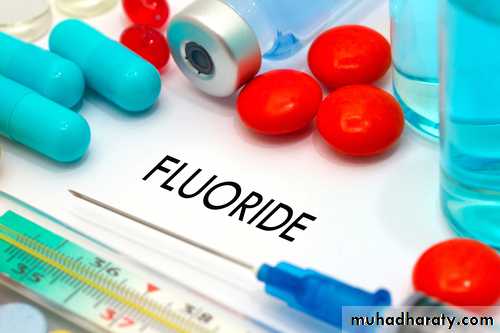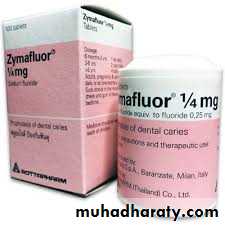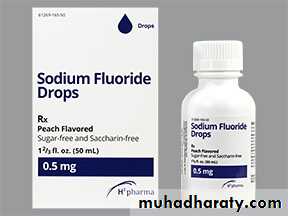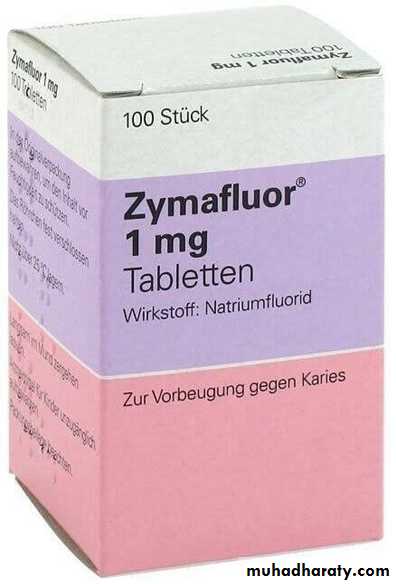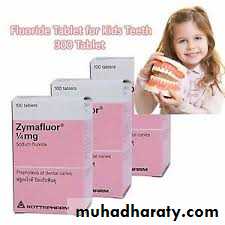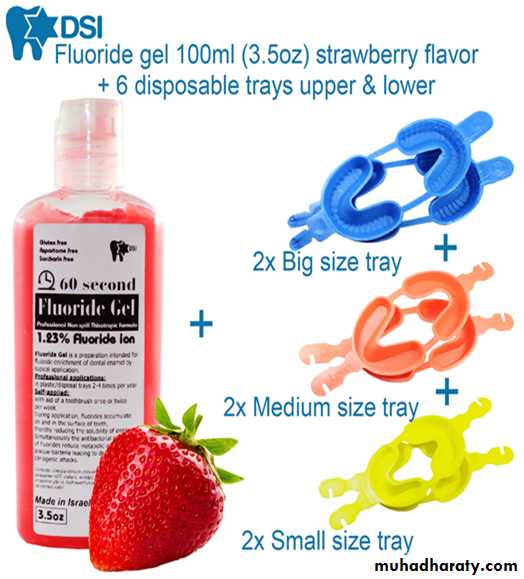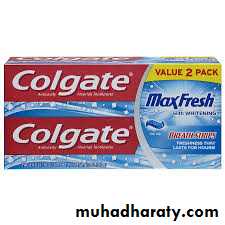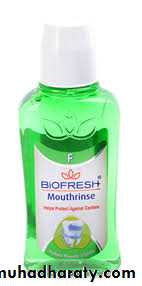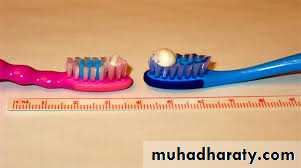• FLOURIDEFourth Stage/University of Mosul/Dentistry CollegeDental Public HealthDr. Raya Al-Naimi
Stay at Home
Corona Virus
• 2
Flouride
Compound form of fluorine.– A trace element, halogen.
– Very reactive gas.
– Not found in free elemental form in nature
• 3
Major Sources of Flourides
1-Water2-Foods
3-Drugs
4-Pollution
• 4
Metabolism , Absorption and Distribution
Major site of absorption: stomach. Studies with animals suggest intestinal absorption also occursAbsorption 100% in case of water
Absorption 50-80% in cases of food
• 5
Carious enamel may take up 10 times more fluoride than adjacent healthy enamel to inhibit expansion of carious lesion.
• 6
Flouride reduces the prevalence and severity of dental caries
• 7Relative Safety
Low and moderate intake results to:Skeletal fluorosis
Mottled enamel
Osteosclerosis (hardening of bone)
Exostoses (bony projections)
Calcification of ligaments
8
9
Indications for Flouride
1- Caries active individuals2-Children shortly after period of tooth eruption
3-Those who take medication that decrease salivary flow or have received radiation to head and neck
4-After periodontal surgery when roots of teeth have been exposed
5-Patients with fixed or removable prosthesis and after placement or replacement
of restorations
6- Patients with an eating disorder or who are undergoing a change in lifestyle which may affect eating or oral hygiene habits conductive to good oral health
7- Mentally and physically challenged individuals.
• 10
Fluoride Delivery Methods
• Systemic Fluorides• Topical Fluorides
• 11
• 12
TYPES OF SYSTEMIC FLUORIDES
1-Community water2-School water fluoridation
3-Fluoridated salt
4-Fouridated milk or fruit juice
5-Flouride tablets and drops or lozenges
• 13
• 14
FLUORIDES COMPOUNDS AND CONCENTRATIONS THAT ARE USUALLY USED IN DIFFERENT SYSTEMIC FLUORIDES METHODS
250-350
PRE REQUIREMENTS OF WATER FLUORIDATION1. Presence of caries in the community/public
2. Level of fluoride concentrations in their drinking water .
3. Centralized water supply to the community
4. Community acceptance/approval.
5. Installation and maintenance cost.
• 15
Water FlouridationIt can be defined as “the upward adjustment of the concentration of fluoride in public water supply in such a way that the concentration of fluoride ion in the water may be consistently maintained at 1 parts per million(ppm) by weight to prevent dental caries with minimal possibility of causing dental fluorosis .”
16
Advantages of water fluoridation
1.It is effective in reduction of dental caries 50 – 60 %.2.It is safe.
3.Low cost.
4.Its ease of implementation.
5.The benifits of fluoride reaches to the entire population.
6.No cooperative effort is required by individual other then consuming water supplies .
7.Saving human suffering toothache
• 17
18
Stay at Home
School Water Flouridation
The amount of fluoride added In school drinking water should be greater than normal because children have to stay in the school for a short period of time and to compensate for holidays and vacations.
The current recommended regimen for school water fluoridation is adding 4.5 times more fluoride compared with community water fluoridation
• 19
DISADVANTAGES
1.Children do not receive the benefit until they go to school.2.Not all children go to the schools that have school fluoridation programmes
3.Amount of amount water drunk can’t be regulated.
• 20
Lawsuit filed in courts many developed countries against water flouridation
• 21Banning of water fluoridation in many countries
Fluoridated Salt
Salt fluoridation is a controlled addition of fluoride, usually sodium or potassium fluoride, during the manufacture of salt for human consumption.• 22
ADVANTAGES
1-Fluoridated salt is safe.2-Theoretically fluoridated salt prevents dental caries by both systemic as well topical action.
3- It does not require community water supply as in flouridation
4- It permits individual to accept it or reject it.
5-Low cost
6-Fluoridated salt and iodized salt can be made available to the population
in case of water fluoridation.
• 23Disadvantages
1-There may be large variations in salt intake in different groups of people .fluoridated salt consumption is lowest when the need for fluorides is greatest – in early years of life during infancy .
2-Difficulties arise when there are multiple drinking water sources which have a naturally optimal or excessive fluoride concentration. It requires refined salt produced with modern technology and a high level of technical expertise.
3-The current view data high salt intake may contribute to hypertension.
• 24
Flouridated milk and Fruit JuiceZeigler ,a paediatrician, who started the first project with fluoridated milk in Swiss Winterthur in 1953
Because milk is recommended as a good food for infants and children , it has been considered as a suitable way for supplying children with fluoride in areas with out fluoride in water.
25
Fluoridated milk is given under supervision in the school .The bioavailability of fluoride is not reduced by milk. Fluoridated milk keeps a permanently low level of ionized fluoride within the oral cavity, promoting remineralisation
Topical and systemic effect
• 26
Incorporation of flouride in to fruit juice is also available and considered as an efficient method to deliver the advantages of fluoride to children .
• 27
FLUORIDE SUPPLEMENTS
different forms such as fluoride tablets ,drops , lozenges.• 28
Fluoride tablets, drops and lozenges are not available over the counter but prescribed by the dentist or paediatrician to individual patients or as a part of school or home based preventive dentistry program
Most commonly used is sodium fluoride .Other compounds used are acidulated phosphate fluoride, potassium fluoride or calcium fluoride.
• 29
Supplements contain measured amount of fluorides, 0.25 mg , 0.5 mg, 1.0 mg.
They should be taken on daily basis according to the prescribed dosage schedule.• 30
Supplemental Fluoride Dosage Schedule (in mg F/day)* Revised,
• Age of Child• ppm** Fluoride in Water Supply
• less than 0.3 ppm
• 0.3 - 0.6 ppm• greater than 0.6 ppm
• Birth to 6 mo.
• 0
• 0
• 0
• 6 mo. To 3 yrs
• 0.25 mg
• 0
• 0
• 3 to 6 yrs
• 0.5 mg
• 0.25 mg
• 0
• 6 to 16 yrs
• 1.0 mg
• 0.5 mg
• 0
Correct dosage is based on the concentration of fluoride in drinking water, age of the child and other available fluoride supplements .
Not more than 1 milligram of fluoride should be ingested each day from all available systemic sources.
• 32
Many reports are found on the effectivness of F tab. Or drops , they fell in to two groups.
1.Those where the fluoride supplements was given at home and was started before school age .
2.Those when F tab was given on school day usually without additional supplements of F during holiday or before school age .
• 33
TOPICAL FLUORIDE PRODUCTSProfessionally applied
(B) Self applied
Professionally applied
Introduced by Bibby in 1942
Dispensed by dental professionals in the dental office and usually involve the use of high fluoride concentration products ranging from 5000-20000 ppm
• 35
Self applied
Include fluoride dentifrices, mouth rinses & gelsAre low fluoride concentration products ranging from 200-1000ppm.
• 36












